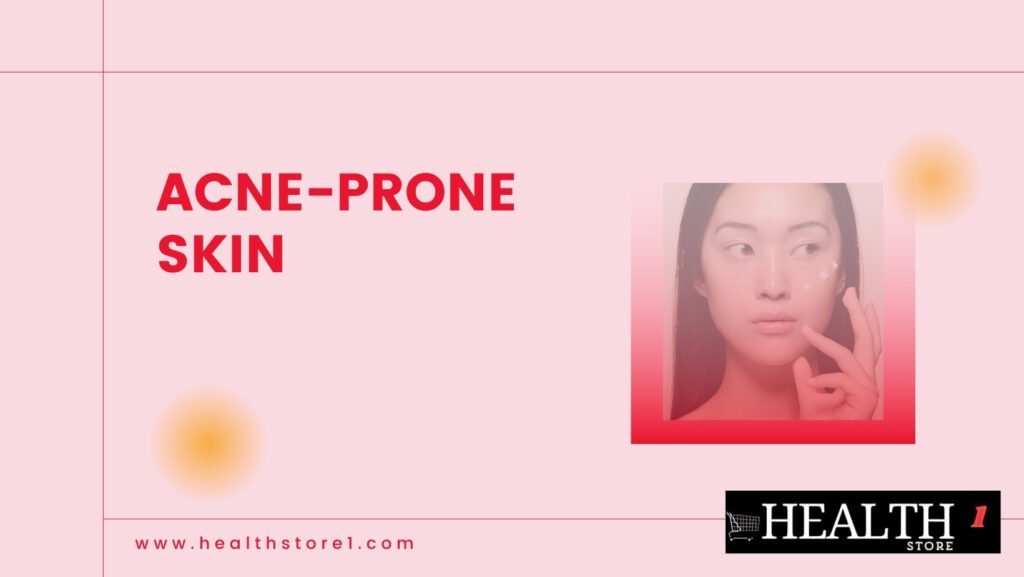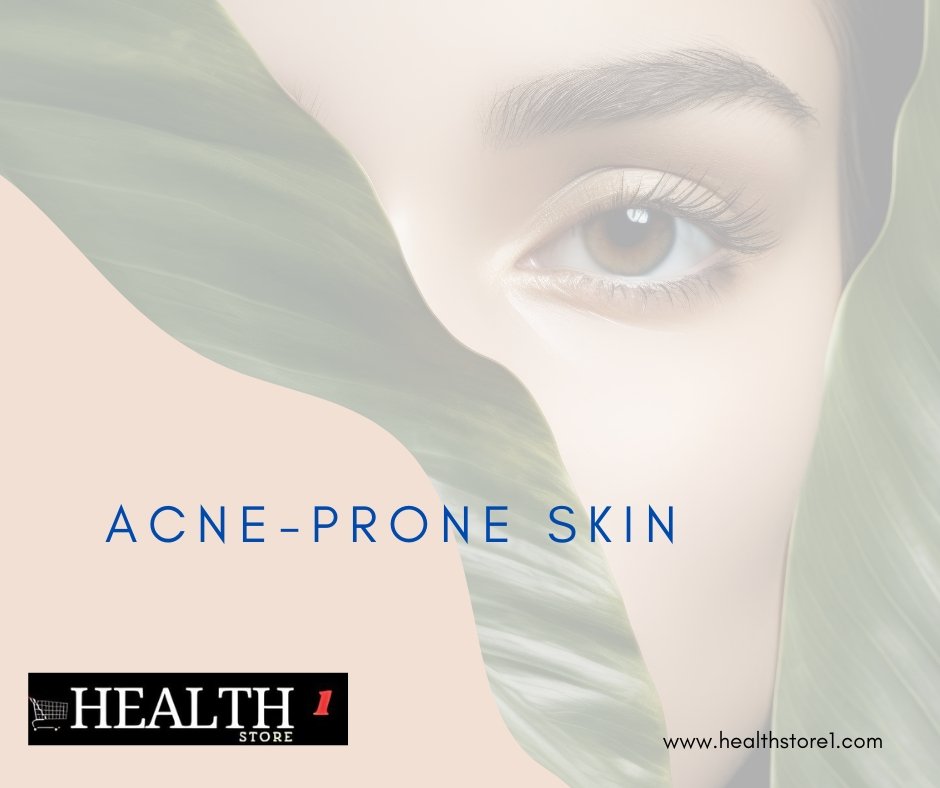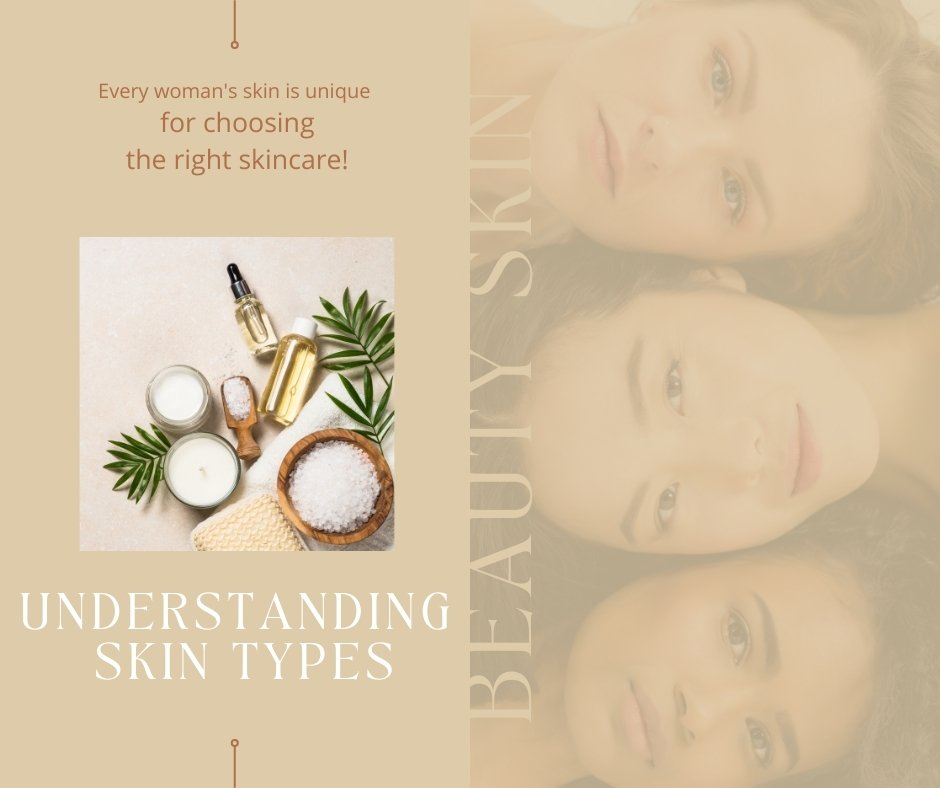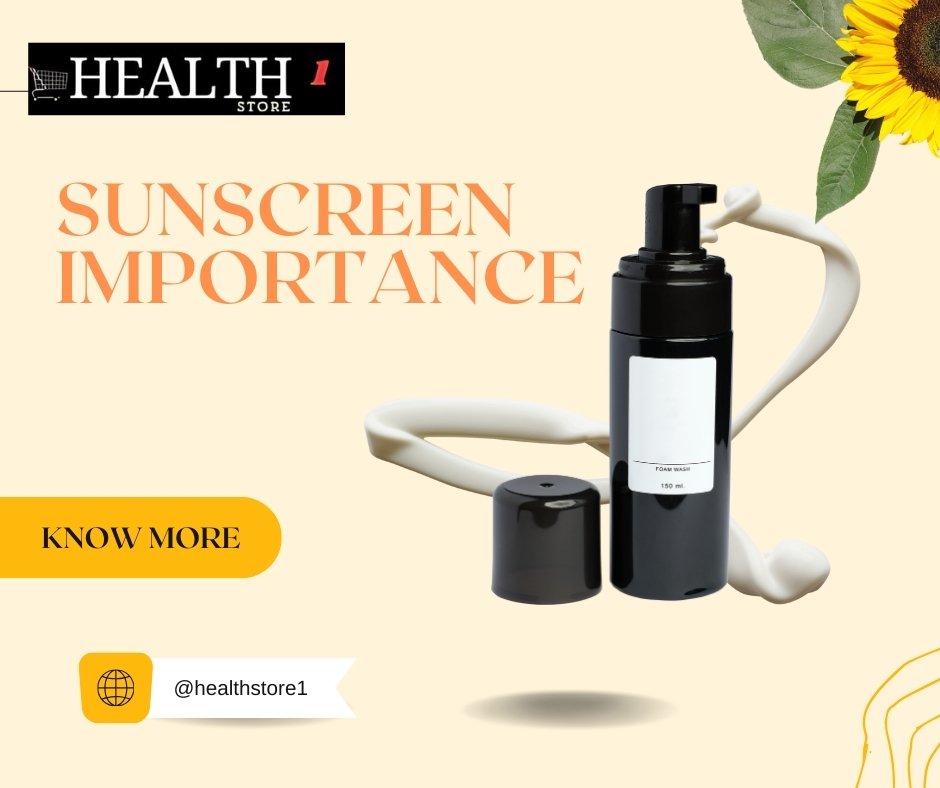Introduction to Acne-Prone Skin
Acne is a common skin condition that affects millions of people worldwide. Characterized by pimples, blackheads, whiteheads, and in more severe cases, cysts, and nodules, acne can have a significant impact on one’s confidence and overall well-being. Understanding the best skincare practices for acne-prone skin is essential for managing and preventing breakouts effectively. This article delves into the science behind acne, the most effective skincare routines, and the lifestyle changes that can help keep your skin clear and healthy.
Table of Contents

Understanding Acne and Its Causes
What is acne?
- Acne occurs when hair follicles become clogged with oil, dead skin cells, and bacteria. The result can range from mild blackheads and whiteheads to severe inflammatory acne.
- Acne is most common during adolescence due to hormonal changes but can persist into adulthood, affecting people of all ages.
Common Causes of Acne:
- Hormonal Changes: Hormonal fluctuations during puberty, menstruation, pregnancy, and stress can lead to increased oil production and acne.
- Excess Sebum Production: Overactive sebaceous glands produce too much oil, which can mix with dead skin cells and clog pores.
- Bacterial Growth: Propionibacterium acnes (P. acnes) bacteria can multiply in clogged pores, leading to inflammation and pimples.
- Diet: Foods high in sugar, dairy, and certain fats have been linked to increased acne severity.
- Environmental Factors: Pollution, humidity, and certain skincare products can contribute to acne by clogging pores or irritating the skin.
| Cause | Description |
|---|---|
| Hormonal Changes | Hormonal fluctuations increase oil production |
| Excess Sebum Production | Overactive sebaceous glands cause clogged pores |
| Bacterial Growth | P. acnes bacteria lead to inflammation and acne |
| Diet | High sugar and dairy intake linked to more severe acne |
| Environmental Factors | Pollution, humidity, and irritants contribute to breakouts |
Introduction to Skincare Routines for Acne-Prone Skin
A consistent and well-rounded skincare routine is essential for managing acne-prone skin. The goal is to use products that effectively target acne while being gentle enough to avoid irritating or drying out the skin.
Key Components of an Acne-Focused Skincare Routine:
- Cleansing: Proper cleansing is the first step to remove excess oil, dirt, and impurities that can clog pores.
- Exfoliating: Regular exfoliation helps to remove dead skin cells and prevent pore blockage.
- Treating: Target acne with active ingredients like salicylic acid, benzoyl peroxide, or retinoids.
- Moisturizing: Hydrate the skin without clogging pores, helping to maintain the skin’s moisture barrier.
- Sun Protection: Protect the skin from UV damage, which can exacerbate acne and lead to hyperpigmentation.
Cleansing for Acne-Prone Skin
Importance of Cleaning:
- Cleansing is crucial for acne-prone skin as it helps to remove the daily buildup of oil, dirt, and makeup that can clog pores and lead to breakouts.
Choosing the Right Cleanser
- Salicylic Acid Cleanser: A beta-hydroxy acid (BHA), salicylic acid penetrates deep into the pores to exfoliate and remove excess oil, making it ideal for oily and acne-prone skin.
- Benzoyl Peroxide Cleanser: This ingredient helps kill acne-causing bacteria and prevent future breakouts. However, it can be drying, so it’s essential to follow up with a moisturizer.
- Gentle Foaming Cleanser: For those with sensitive skin, a gentle foaming cleanser effectively removes impurities without causing irritation.
| Cleanser Type | Active Ingredient | Benefits |
|---|---|---|
| Salicylic Acid cleaner | Salicylic Acid (BHA) | Deep cleans pores, reduces oil |
| Benzoyl Peroxide cleaner | Benzoyl Peroxide | Kills bacteria, prevents breakouts |
| Gentle Foaming Cleanser | Mild surfactants | Suitable for sensitive, irritated skin |
Cleansing Frequency:
- Cleanse your face twice a day—morning and night—to keep pores clear without stripping the skin of its natural oils. Over-cleansing can lead to dryness and irritation, which may worsen acne.
Exfoliating Acne-Prone Skin
The Role of Exfoliation
- Exfoliation is critical for acne-prone skin as it removes dead skin cells that can clog pores and lead to breakouts. However, it’s important to exfoliate gently to avoid irritating the skin.
Types of Exfoliants:
- Chemical Exfoliants: Alpha-hydroxy acids (AHAs) like glycolic acid and beta-hydroxy acids (BHAs) like salicylic acid are effective for acne-prone skin. They dissolve dead skin cells without the abrasiveness of physical scrubs.
- Physical Exfoliants: These include scrubs with small granules that manually remove dead skin cells. For acne-prone skin, avoid harsh physical exfoliants that can cause micro-tears and irritation.
Frequency of Exfoliation:
- Over-exfoliating can lead to irritation and exacerbate acne. Exfoliate 2-3 times a week, depending on your skin’s tolerance.
| Exfoliant Type | Active Ingredients | Recommended Use |
|---|---|---|
| Chemical Exfoliants | AHAs (Glycolic Acid), BHAs | 2-3 times per week |
| Physical Exfoliants | Fine granules or beads | Use sparingly to avoid irritation |
Acne Treatment Products
Active Ingredients in Acne Treatments:
- Benzoyl Peroxide: An antibacterial agent that kills P. acnes bacteria and reduces inflammation. It’s commonly found in spot treatments and face washes.
- Salicylic Acid: Salicylic acid exfoliates inside the pores, making it effective for treating and preventing blackheads and whiteheads.
- Retinoids: Derived from vitamin A, retinoids increase cell turnover, preventing dead skin cells from clogging pores. They are highly effective for acne but can be irritating for some skin types.
- Tea Tree Oil: A natural alternative to benzoyl peroxide, tea tree oil has antimicrobial properties that help reduce acne without causing excessive dryness.
Application Tips:
- Apply acne treatments after cleansing and before moisturizing.
- Start with lower concentrations of active ingredients and gradually increase as your skin builds tolerance.
| Treatment Type | Active Ingredient | Benefits |
|---|---|---|
| Benzoyl Peroxide | Benzoyl Peroxide | Kills bacteria, reduces inflammation |
| Salicylic Acid | Salicylic Acid (BHA) | Exfoliates inside pores, prevents clogs |
| Retinoids | Retinol, Adapalene | Increases cell turnover, prevents breakouts |
| Tea Tree Oil | Natural antimicrobial | Reduces acne with less dryness |
Moisturizing Acne-Prone Skin
Importance of Moisturizing:
- Moisturizing is a critical step, even for acne-prone skin. Maintaining skin hydration helps protect the skin’s barrier and prevent overproduction of oil, which can lead to breakouts.
Choosing a Non-Comedogenic Moisturizer:
- Gel-Based Moisturizers: Lightweight and hydrating, gel-based moisturizers are perfect for oily and acne-prone skin. They provide moisture without clogging pores.
- Oil-Free Moisturizers: Formulated to hydrate without adding excess oil, these moisturizers often contain ingredients like hyaluronic acid and glycerin, which attract moisture without being heavy.
- Moisturizers with Niacinamide: Niacinamide helps regulate oil production, reduce inflammation, and improve skin texture, making it ideal for acne-prone skin.
| Moisturizer Type | Key Ingredients | Benefits |
|---|---|---|
| Gel-Based Moisturizers | Hyaluronic Acid, Glycerin | Lightweight hydration, non-comedogenic |
| Oil-Free Moisturizers | Water-based, Niacinamide | Hydrates without adding oil |
| Moisturizers with Niacinamide | Niacinamide, Ceramides | Regulates oil, soothes inflammation |
Moisturizing Frequency:
- Moisturize twice daily, morning and night, to maintain hydration and prevent the skin from becoming overly dry or oily.
Sun Protection for Acne-Prone Skin
Why Sun Protection is Crucial:
- Protecting acne-prone skin from UV damage is essential. UV exposure can worsen acne scars, lead to hyperpigmentation, and increase the risk of skin cancer. Daily sunscreen use is vital, even for oily skin.
Choosing the Right Sunscreen:
- Oil-Free Sunscreens: These are specifically formulated for acne-prone skin and won’t clog pores.
- Mineral Sunscreens: Containing zinc oxide or titanium dioxide, mineral sunscreens are less likely to cause irritation and are suitable for sensitive skin.
- Non-Comedogenic Formulas: Look for sunscreens labeled as non-comedogenic, meaning they won’t block pores.
Sunscreen Type: Key Ingredients: Benefits
Oil-Free Sunscreens: Water-based, Non-comedogenic | Protects without clogging pores.
Mineral Sunscreens: Zinc Oxide, Titanium Dioxide | Suitable for sensitive, acne-prone skin.
Non-Comedogenic Formulas: Non-comedogenic agents | Reduces the risk of breakouts from sunscreen.
Sun Protection Frequency:
- Apply sunscreen every morning as the final step in your skincare routine. Reapply every two hours if exposed to the sun for extended periods.
Lifestyle Changes for Acne Management
Diet and Nutrition:
- Research suggests that a diet high in refined sugars, dairy products, and unhealthy fats may exacerbate acne. Incorporating foods rich in omega-3 fatty acids, antioxidants, and fiber can help support clearer skin.
Hydration:
- Staying hydrated is crucial for overall skin health. Drinking plenty of water helps flush out toxins and keep the skin hydrated, which can reduce the severity of acne.
Stress Management:
- Stress triggers the release of hormones like cortisol, which can increase oil production and lead to breakouts. Practicing stress management techniques such as yoga, meditation, and adequate sleep can help improve skin health.
Regular Exercise:
- Exercise promotes healthy blood circulation, which nourishes the skin and helps remove toxins. However, it’s important to cleanse the skin after sweating to prevent clogged pores.
Conclusion of Acne-Prone Skin
Managing acne-prone skin requires a consistent and well-thought-out skincare routine, combined with healthy lifestyle habits. By understanding the causes of acne and choosing the right products and practices, you can effectively control breakouts and achieve clearer, healthier skin. Remember to be patient, as improvements may take time, but with persistence and the right approach, you can keep your acne under control.




